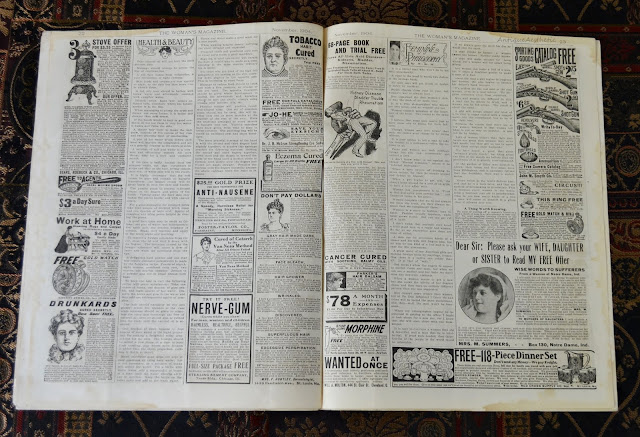View of the front with all the accessories(including a matching band for my hat with a buckle).
View of the back - the belt slipped a bit so the spot where I tacked the pleats is visible. I was so worried the pleats would just disappear when I took out the basting stitches, but was pleasantly surprised to see they still mostly hold their shape.
Color details.
Back collar detail.
Sleeve and front detail.
Front of slip neckline detail with brooch.
The things I've learned:
1) Tailor's tacks are both good and bad - they mark both pieces of fabric without needing to be washed out or risking staining the fabric, and using multiple colors instantly tells me what mark means what, but they are somewhat time consuming to put in and have the potential to fall out which can be annoying.2) Pleats are only good in small doses - I used to prefer pleats to gathers, but these dress-length pleats were the devil to get even and to stay in place, hence all the basting.
3) Perforated patterns aren't nearly as hard as they seem - I'm sure in a pattern that comes with minimal instructions it would be difficult to translate what all the holes mean, so I'm glad my first attempt had a Deltor to hold my hand through the process, but I feel that the next vintage pattern I work on will not seem so scary now that I know a bit more about the use of perforations.
Would I undertake a vintage pattern again? Absolutely, and I hope I can find some more, perhaps 1930s, patterns to make in the future.
Shoes: American Duchess 'Mae'
Gloves/parasol: Amazon
Purse: not vintage, but from an antique store
Hat: Target
Buckle on hat: vintage
Brooch: vintage, circa 1920s-1930s
Sunglasses: Zenni, prescription






























